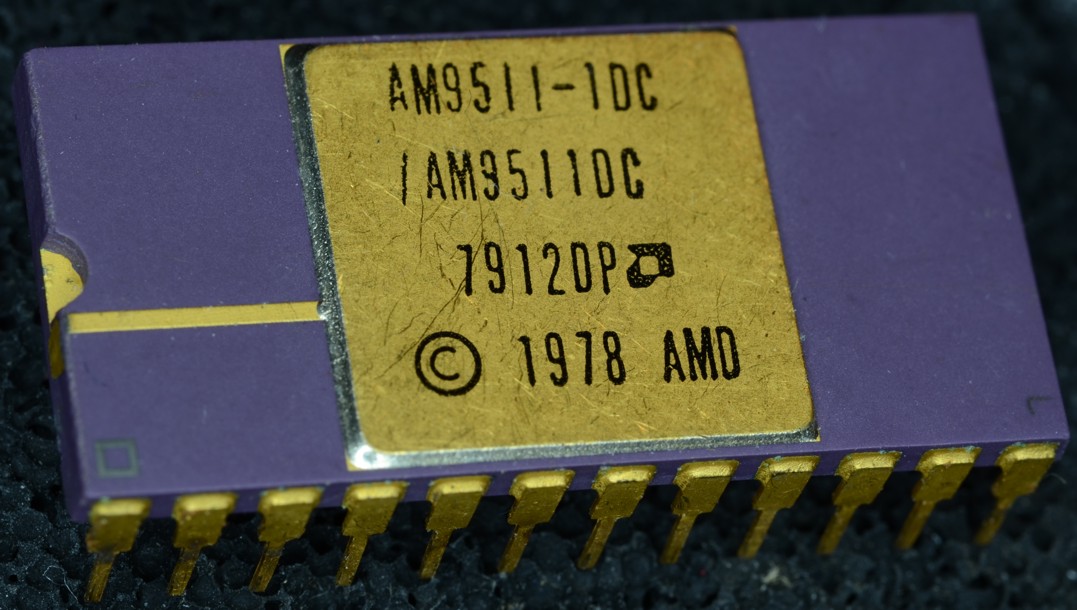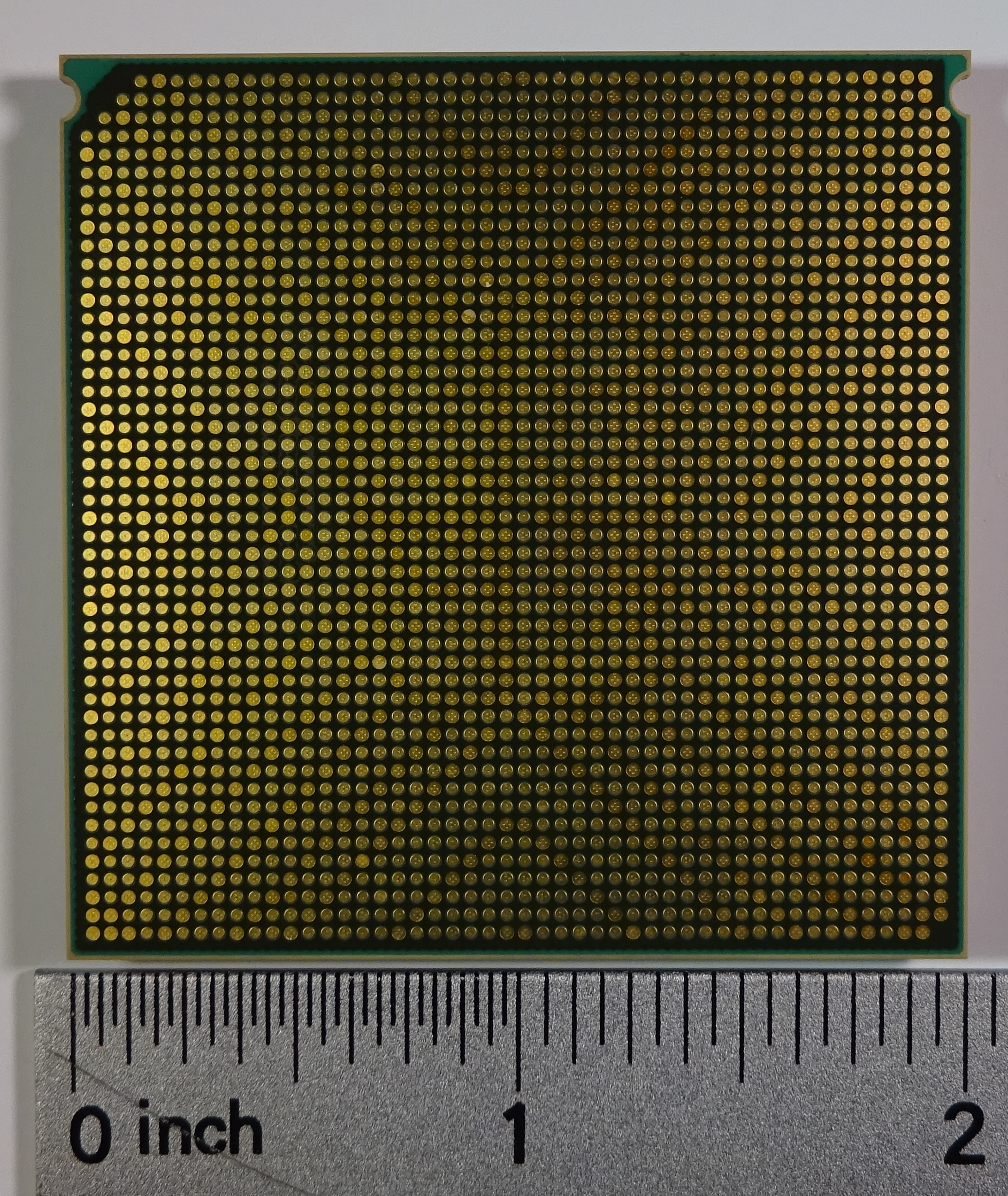|
Decimal Floating Point
Decimal floating-point (DFP) arithmetic refers to both a representation and operations on Decimal data type, decimal floating-point numbers. Working directly with decimal (base-10) fractions can avoid the rounding errors that otherwise typically occur when converting between decimal fractions (common in human-entered data, such as measurements or financial information) and binary (base-2) fractions. The advantage of decimal floating-point representation over decimal Fixed-point arithmetic, fixed-point and Integer (computer science), integer representation is that it supports a much wider range of values. For example, while a fixed-point representation that allocates 8 decimal digits and 2 decimal places can represent the numbers 123456.78, 8765.43, 123.00, and so on, a floating-point representation with 8 decimal digits could also represent 1.2345678, 1234567.8, 0.000012345678, 12345678000000000, and so on. This wider range can dramatically slow the accumulation of rounding error ... [...More Info...] [...Related Items...] OR: [Wikipedia] [Google] [Baidu] |
Decimal Data Type
Some programming languages (or compilers for them) provide a built-in (primitive) or library decimal data type to represent non-repeating decimal fractions like 0.3 and −1.17 without rounding, and to do arithmetic on them. Examples are the decimal.Decimal or num7.Num type of Python (programming language), Python, and analogous types provided by other languages. Rationale Fractional numbers are supported on most programming languages as floating-point numbers or fixed-point numbers. However, such representations typically restrict the denominator to a power of two. Most decimal fractions (or most fractions in general) cannot be represented exactly as a fraction with a denominator that is a power of two. For example, the simple decimal fraction 0.3 () might be represented as (0.299999999999999988897769…). This inexactness causes many problems that are familiar to experienced programmers. For example, the expression 0.1 * 7 0.7 might counterintuitively evaluate to false in some ... [...More Info...] [...Related Items...] OR: [Wikipedia] [Google] [Baidu] |
Python (programming Language)
Python is a high-level programming language, high-level, general-purpose programming language. Its design philosophy emphasizes code readability with the use of significant indentation. Python is type system#DYNAMIC, dynamically type-checked and garbage collection (computer science), garbage-collected. It supports multiple programming paradigms, including structured programming, structured (particularly procedural programming, procedural), object-oriented and functional programming. It is often described as a "batteries included" language due to its comprehensive standard library. Guido van Rossum began working on Python in the late 1980s as a successor to the ABC (programming language), ABC programming language, and he first released it in 1991 as Python 0.9.0. Python 2.0 was released in 2000. Python 3.0, released in 2008, was a major revision not completely backward-compatible with earlier versions. Python 2.7.18, released in 2020, was the last release of ... [...More Info...] [...Related Items...] OR: [Wikipedia] [Google] [Baidu] |
Decimal128 Floating-point Format
In computing, decimal128 is a decimal floating-point number format that occupies 128 bits in memory. Formally introduced in IEEE 754-2008, it is intended for applications where it is necessary to emulate decimal rounding exactly, such as financial and tax computations. Format The decimal128 format supports 34 decimal digits of significand and an exponent range of −6143 to +6144, i.e. to . Because the significand is not normalized, most values with less than 34 significant digits have multiple possible representations; , etc. This set of representations for a same value is called a '' cohort''. Zero has 12288 possible representations (24576 if both signed zeros are included, in two different cohorts). Encoding of decimal128 values The IEEE 754 standard allows two alternative encodings for decimal128 values: * The binary encoding, based on binary integer decimal (BID): The significand is encoded as an unsigned integer written in binary. * The decimal encoding, ... [...More Info...] [...Related Items...] OR: [Wikipedia] [Google] [Baidu] |
Decimal64 Floating-point Format
In computing, decimal64 is a decimal floating-point computer number format that occupies 8 bytes (64 bits) in computer memory. Decimal64 is a decimal floating-point format, formally introduced in the 2008 revision of the IEEE 754 standard, also known as ISO/IEC/IEEE 60559:2011. Format Decimal64 supports 'normal' values that can have 16 digit precision from to , plus 'denormal' values with ramp-down relative precision down to ±1.×10−398, signed zeros, signed infinities and NaN (Not a Number). This format supports two different encodings. The binary format of the same size supports a range from denormal-min , over normal-min with full 53-bit precision to max . Because the significand for the IEEE 754 decimal formats is not normalized, most values with less than 16 significant digits have multiple possible representations; 1000000 × 10−2=100000 × 10−1=10000 × 100=1000 × 101 all have the value 10000. These sets of representations for a same value are called '' c ... [...More Info...] [...Related Items...] OR: [Wikipedia] [Google] [Baidu] |
Decimal32 Floating-point Format
In computing, decimal32 is a decimal floating-point computer numbering format that occupies 4 bytes (32 bits) in computer memory. Purpose and use Like the binary16 and binary32 formats, decimal32 uses less space than the actually most common format binary64. Range and precision decimal32 supports 'normal' values, which can have 7 digit precision from up to , plus 'subnormal' values with ramp-down relative precision down to (one digit), signed zeros, signed infinities and NaN (Not a Number). The encoding is somewhat complex, see below. The binary format with the same bit-size, binary32, has an approximate range from subnormal-minimum over normal-minimum with full 24-bit precision: to maximum . Encoding of decimal32 values decimal32 values are encoded in a 'not normalized' near to 'scientific format', with combining some bits of the exponent with the leading bits of the significand in a 'combination field'. Besides the special cases infinities and ... [...More Info...] [...Related Items...] OR: [Wikipedia] [Google] [Baidu] |
Significant Digits
Significant figures, also referred to as significant digits, are specific digits within a number that is written in positional notation that carry both reliability and necessity in conveying a particular quantity. When presenting the outcome of a measurement (such as length, pressure, volume, or mass), if the number of digits exceeds what the measurement instrument can resolve, only the digits that are determined by the resolution are dependable and therefore considered significant. For instance, if a length measurement yields 114.8 mm, using a ruler with the smallest interval between marks at 1 mm, the first three digits (1, 1, and 4, representing 114 mm) are certain and constitute significant figures. Further, digits that are uncertain yet meaningful are also included in the significant figures. In this example, the last digit (8, contributing 0.8 mm) is likewise considered significant despite its uncertainty. Therefore, this measurement contains ... [...More Info...] [...Related Items...] OR: [Wikipedia] [Google] [Baidu] |
Significand
The significand (also coefficient, sometimes argument, or more ambiguously mantissa, fraction, or characteristic) is the first (left) part of a number in scientific notation or related concepts in floating-point representation, consisting of its significant digits. For negative numbers, it does not include the initial minus sign. Depending on the interpretation of the exponent, the significand may represent an integer or a fractional number, which may cause the term "mantissa" to be misleading, since the ''mantissa'' of a logarithm is always its fractional part. Although the other names mentioned are common, ''significand'' is the word used by IEEE 754, an important technical standard for floating-point arithmetic. In mathematics, the term "argument" may also be ambiguous, since "the argument of a number" sometimes refers to the length of a circular arc from 1 to a number on the unit circle in the complex plane. Example The number 123.45 can be represented as a decimal floati ... [...More Info...] [...Related Items...] OR: [Wikipedia] [Google] [Baidu] |
Coprocessor
A coprocessor is a computer processor used to supplement the functions of the primary processor (the CPU). Operations performed by the coprocessor may be floating-point arithmetic, graphics, signal processing, string processing, cryptography or I/O interfacing with peripheral devices. By offloading processor-intensive tasks from the main processor, coprocessors can accelerate system performance. Coprocessors allow a line of computers to be customized, so that customers who do not need the extra performance do not need to pay for it. Functionality Coprocessors vary in their degree of autonomy. Some (such as FPUs) rely on direct control via coprocessor instructions, embedded in the CPU's instruction stream. Others are independent processors in their own right, capable of working asynchronously; they are still not optimized for general-purpose code, or they are incapable of it due to a limited instruction set focused on accelerating specific tasks. It is common for these to b ... [...More Info...] [...Related Items...] OR: [Wikipedia] [Google] [Baidu] |
IBM System Z9
IBM System z9 is a line of IBM mainframe computers. The first models were available on September 16, 2005. The System z9 also marks the end of the previously used eServer zSeries naming convention. It was also the last mainframe computer that NASA ever used. Background System z9 is a mainframe using the z/Architecture, previously known as ESAME. z/Architecture is a 64-bit architecture which replaces the previous 31-bit-addressing/32-bit-data ESA/390 architecture while remaining completely compatible with it as well as the older 24-bit-addressing/32-bit-data System/360 architecture. The primary advantage of this arrangement is that memory intensive applications like DB2 are no longer bounded by 31-bit memory restrictions while older applications can run without modifications. Name change With the announcement of the System z9 Business Class server, IBM has renamed the System z9 109 as the System z9 Enterprise Class server. IBM documentation abbreviates them as th ... [...More Info...] [...Related Items...] OR: [Wikipedia] [Google] [Baidu] |
POWER6
The POWER6 is a microprocessor developed by IBM that implemented the Power ISA#Power ISA v.2.05, Power ISA v.2.05. When it became available in systems in 2007, it succeeded the POWER5#POWER5+, POWER5+ as IBM's flagship Power microprocessor. It is claimed to be part of the eCLipz project, said to have a goal of converging IBM's server hardware where practical (hence "ipz" in the acronym: IBM AS/400, iSeries, pSeries, and zSeries). History POWER6 was described at the International Solid-State Circuits Conference (ISSCC) in February 2006, and additional details were added at the Microprocessor Forum in October 2006 and at the next ISSCC in February 2007. It was formally announced on May 21, 2007. It was released on June 8, 2007 at speeds of 3.5, 4.2 and 4.7 GHz, but the company has noted prototypes have reached 6 GHz. POWER6 reached first silicon in the middle of 2005, and was bumped to 5.0 GHz in May 2008 with the introduction of the P595. Description The POWE ... [...More Info...] [...Related Items...] OR: [Wikipedia] [Google] [Baidu] |


